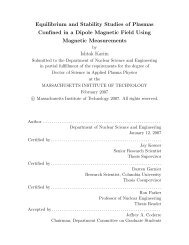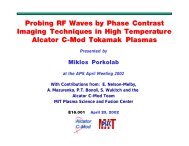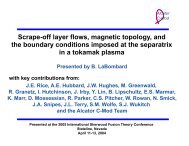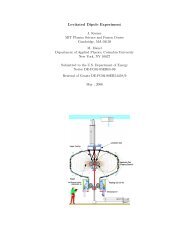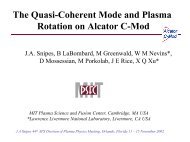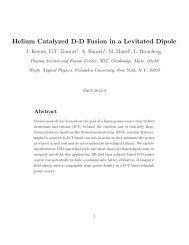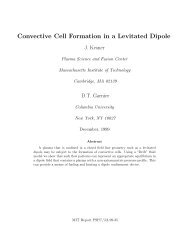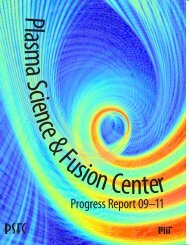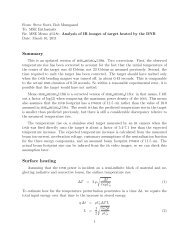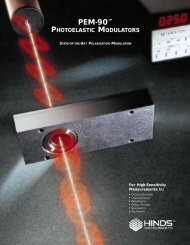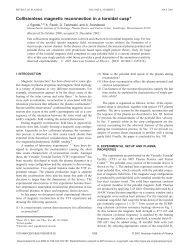From the Director - Plasma Science and Fusion Center - MIT
From the Director - Plasma Science and Fusion Center - MIT
From the Director - Plasma Science and Fusion Center - MIT
Create successful ePaper yourself
Turn your PDF publications into a flip-book with our unique Google optimized e-Paper software.
<strong>Plasma</strong> Technology<br />
Background<br />
The objectives of <strong>the</strong> <strong>Plasma</strong> Technology<br />
Division are to develop new spin-off<br />
applications from plasma science in areas<br />
which include clean, high-efficiency<br />
vehicles, homel<strong>and</strong>-security-relevant<br />
monitoring devices <strong>and</strong> nuclear waste<br />
treatment.<br />
Dan Cohn, Head, <strong>Plasma</strong> Technology Division.<br />
The objectives of <strong>the</strong> <strong>Plasma</strong> Technology<br />
Division, led by Drs. Daniel Cohn <strong>and</strong><br />
Paul Woskov, are to develop new spin-off<br />
applications from plasma science <strong>and</strong> related<br />
technologies in areas that include clean, high<br />
efficiency vehicles, homel<strong>and</strong>-security-relevant<br />
monitoring devices <strong>and</strong> nuclear waste treatment.<br />
The Division also seeks to develop new<br />
environmental sensors.<br />
In previous years <strong>the</strong> Division has received six<br />
R&D 100 Awards for environmental <strong>and</strong> process<br />
monitoring devices, <strong>and</strong> a Discover Award<br />
for transportation technology. It has adapted<br />
<strong>and</strong> applied plasma technology expertise to<br />
a variety of environmental <strong>and</strong> energy applications,<br />
such as clean <strong>and</strong> efficient fuel technologies,<br />
<strong>and</strong> diagnostics for environmental<br />
monitoring, nuclear waste processing <strong>and</strong><br />
national security work. The plasmas used for<br />
<strong>the</strong>se applications are at or near atmospheric<br />
pressure, <strong>and</strong> range from approximately<br />
room temperature to 10,000°C. <strong>Plasma</strong>s in<br />
<strong>the</strong> high temperature end of this range have<br />
been used to investigate <strong>the</strong> treatment of solid<br />
wastes, monitor hazardous metals pollution,<br />
<strong>and</strong> chemically change hydrocarbon fuels to<br />
make <strong>the</strong>m burn more cleanly. Room temperature<br />
‘cold’ plasmas have been used to treat,<br />
selectively <strong>and</strong> efficiently, dilute concentrations<br />
of hazardous substances in air streams.<br />
The R&D 100 Awards <strong>and</strong> Discover Award<br />
for Technological Innovation were given to<br />
<strong>the</strong> Division for work in <strong>the</strong> following areas:<br />
• A microwave plasma continuous<br />
emissions monitor for hazardous<br />
metals monitors <strong>the</strong> gas emitted by<br />
plasma furnaces, incinerators <strong>and</strong><br />
32



